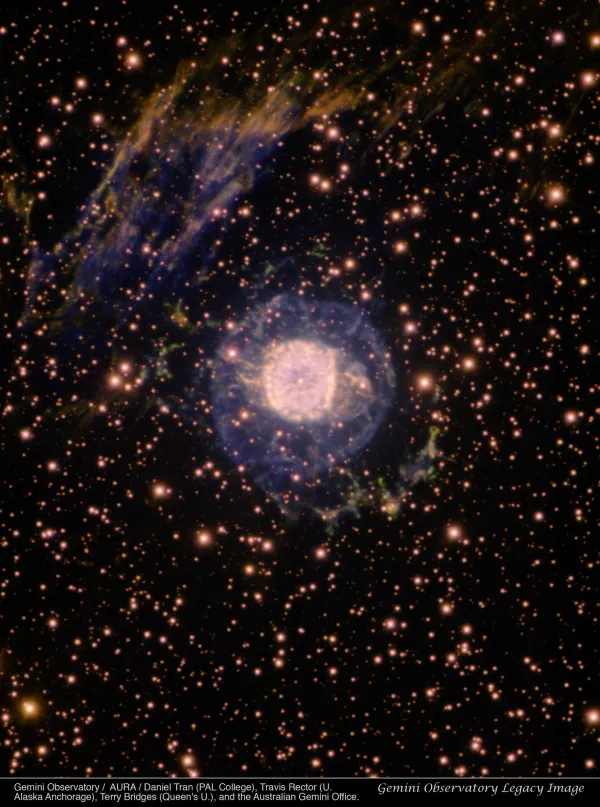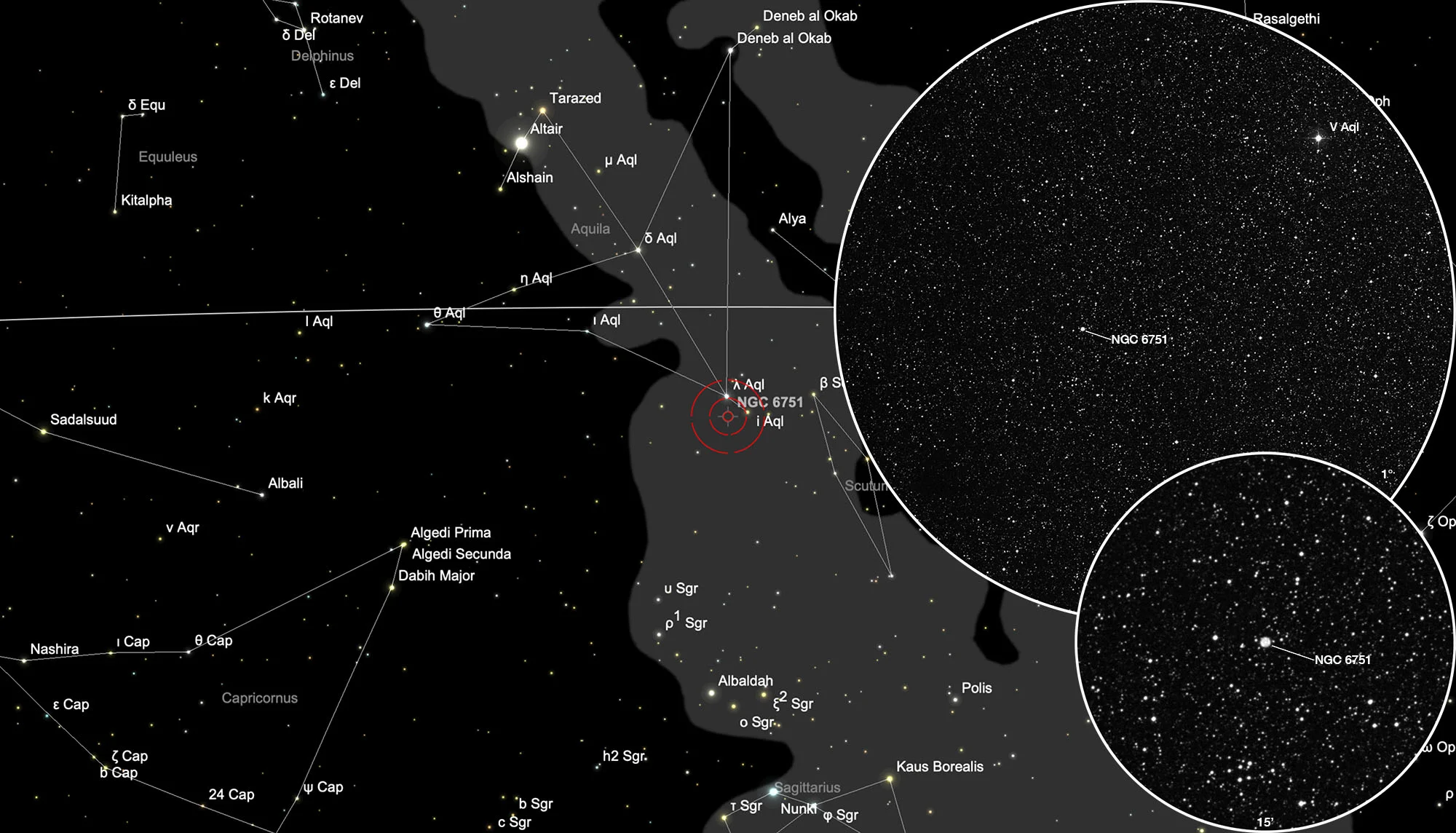Glowing Eye Nebula (NGC 6751)

History
This planetary nebula was first discovered on 20th July 1863 by the German astronomer Albert Marth. He was observing on Malta using the 48 inch reflector from William Lassell. The same nebula was also discovered on 17th July 1871 by the French astronomer Édouard Stephan with the 31 inch Foucault reflector at Marseille observatory. But he had misrecorded the coordinates and hence on 3 August 1881 he rediscovered it again. [277]
John L. E. Dreyer added 1888 Marths discovery as NGC 6751 to his «New General Catalogue» with the description «pretty bright, small». Stephans first discovery from 1871 with the wrong coordinates was added as NGC 6748 with the description «pretty bright, very small, brighter in the middle». Credit for his rediscover from 1881 was added to NGC 6751. [313]
In 1907 the object was recognized to be a planetary nebula by the Scottish-American astronomer Williamina Fleming. She was an assistant to Edwart Pickering, an astronomy professor at Harward University. [141, 196]

Physical Properties
The nebula NGC 6751 shows several remarkable and poorly understood features. On the HST image in Fig. 1 blue regions mark the hottest glowing gas, which forms a roughly circular ring around the central stellar remnant. Orange and red show the locations of cooler gas. [479]
The PN shows a thick equatorial structure fragmented into multiple knots that enclose a fast expanding bubble with a filamentary surface structure. The knotty ring is surrounded by faint emission from a disk-like envelope. Lobes with embedded filaments form a bipolar outflow. The equatorial ring is tilted with respect to the line of sight and with respect to the bipolar outflow. A spherical halo surrounds the PN and there is material further out identified as a fragmented outer halo. NGC 6751 is located close to the galactic plane and its large-scale surrounding environment is shown to be a gas-rich region. There are indications that the PN is interacting with the interstellar medium. Emission components from an extended nebulosity located a couple of arcminutes away from the nebula (see Fig. 2) have radial velocities that are inconsistent with the rest of NGC 6751 and are confirmed as originating from the ambient material, not related to the PN. [480]
According to Simbad the visual magnitude of the nebula is 15.48 mag and the distance is given as 2585 pc. [145] The age of the nebula is estimated to be 3000 years and the bright inner portion of the nebula has a diameter of about 0.8 light years. The emission of the nebula are being ionized by the central star, which has a temperature of over 100'000 Kelvin. [481]
| Designations | PN G029.2-05.9: NGC 6751, PK 29-05.1, ARO 101, Sa 2-382, Th 1- J, VV 219, VV' 477 |
| Right Ascension (J2000.0) | 19h 05m 56s |
| Declination (J2000.0) | -05° 59' 28" |
| Dimensions | 20.5" (optical) |
| Distance | 1.4 kpc |
| Radial Velocity | -38.5 ± 2.8 km/s |
| Expansion Velocity | 40.0 (O-III) 38. (N-II) km/s |
| C-Star Designations | AG82 344, CSI -06 -19031 0, EM* CDS 1043, HD 177656 |
| C-Star Magnitude | B: 15.78, V: 15.45 |
| C-Star Spectral Type | WC 4 |
| Discoverer | FLEMING 1907 |
Finder Chart
The planetary nebula NGC 6751 can be found in the constellation Aquila, roughly 1° south of the 3.4 mag bright star λ Aquilae. On 8 July it is in opposition to the Sun and crosses the meridian at local midnight. The best observing time are the months March to December.
Visual Observation
400 mm Aperture: At around 3 am, already low on the horizon, the PN appears as a round disk in the 21 mm Tele Vue Ethos eyepiece at 85x magnification, even without a filter. With the 9 mm Tele Vue Nagler eyepiece at 200x magnification, the darker inner area emerges and now and then the central star flashes. — 400 mm f/4.5 Taurus Dobsonian, Hasliberg, 19. 8. 2023, SQM 21.2, Bernd Nies
